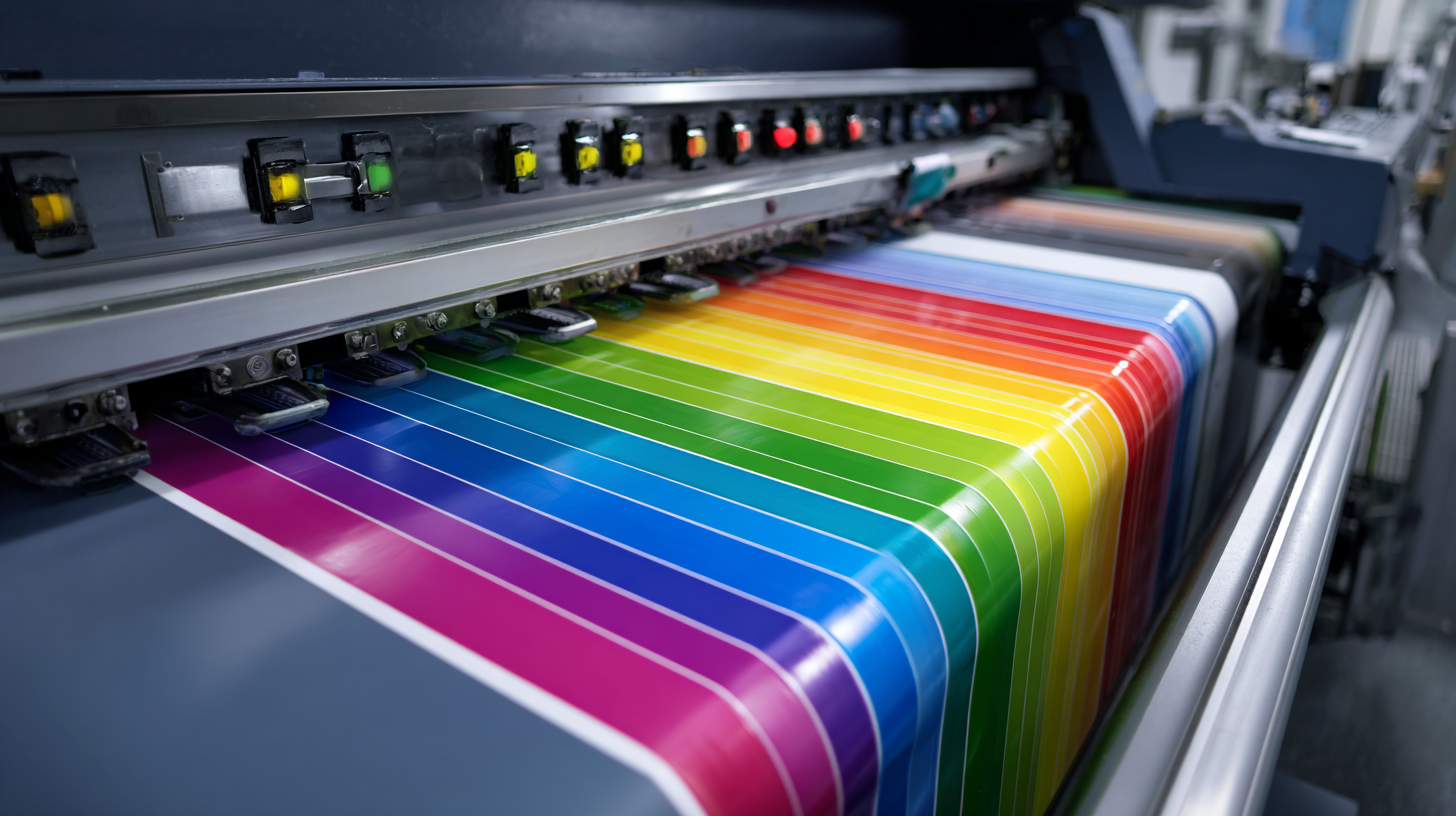In today's rapidly evolving landscape of digital printing and graphics, sourcing top-quality suppliers for PPF plotter data is paramount for businesses aiming to stay competitive. As the demand for high-resolution prints and advanced materials grows, having access to superior PPF plotter data directly impacts the quality and efficiency of printing operations. This essential guide will equip you with a comprehensive checklist designed to streamline the supplier selection process and ensure you find the best resources necessary for your projects. From evaluating supplier credibility to understanding their technology and support services, we will explore the critical factors that contribute to successful partnerships. By following these strategic guidelines, you can enhance your production capabilities and achieve unparalleled results in your printing endeavors.

When sourcing top-quality suppliers for PPF plotter data, it is crucial to identify the key characteristics that set high-quality PPF plotters apart. First and foremost, precision is paramount. A reliable plotter must deliver accurate cut lines for PPF applications, ensuring a perfect fit for vehicles. Look for plotters that boast high-resolution capabilities, as this will translate to sharper and cleaner cuts. Additionally, the stability of the cutting mechanism plays a significant role in maintaining consistent performance across different materials.
Another vital characteristic to consider is the plotter’s compatibility with various software programs. High-quality suppliers typically provide plotters that seamlessly integrate with industry-standard design software, allowing for smoother workflows and enhanced productivity. Furthermore, invest in plotters that offer user-friendly features, such as intuitive interfaces and automated settings, which can save valuable time during the printing and cutting processes. Lastly, robust customer support and warranty offerings should not be overlooked, as they indicate a supplier's commitment to quality and product longevity. When these vital characteristics are taken into account, finding the right PPF plotter becomes a more straightforward and effective process.
When sourcing top-quality suppliers for PPF plotter data, evaluating supplier reliability is crucial. Metrics such as delivery performance, quality control processes, and customer feedback should be prioritized. A supplier’s delivery performance can be assessed through on-time delivery rates and the consistency of shipments. Quality control measures, including the frequency of inspections and the existence of quality assurance protocols, help ensure that you receive dependable and high-quality data without discrepancies.

In addition to metrics, certifications play a vital role in gauging supplier reliability. Look for certifications such as ISO 9001, which indicates a commitment to quality management systems, or industry-specific certifications that showcase a supplier's expertise. These credentials not only reflect adherence to certain standards but also enhance your confidence in their ability to deliver reliable products. Consider scheduling audits or requesting detailed reports on a supplier's certification status to gain deeper insights into their operations and reliability.
In the realm of PPF (Paint Protection Film) plotter data sourcing, the significance of material quality cannot be overstated. According to a recent industry report by Smithers Pira, approximately 70% of installers cite material quality as the cornerstone of successful applications, highlighting that the durability and performance of PPF largely depend on the supplier's standards. Quality materials not only enhance the visual appeal of a vehicle but also offer better protection against environmental factors, thus directly influencing customer satisfaction and retention rates.
When sourcing suppliers for PPF plotter data, it’s essential to have a rigorous checklist in place. First, prioritize suppliers who conduct regular quality assessments and have certifications from recognized institutions. Moreover, consider engaging with suppliers who provide transparent data sheets to discuss the specifics of their materials, including film thickness, UV resistance, and warranty terms.
Tips: Always request sample materials to evaluate their performance firsthand before finalizing a supplier. It's also beneficial to read reviews from other installers to gain insights into their experiences with various suppliers. Establishing strong relationships and open lines of communication with your chosen suppliers can help you stay informed about the latest advancements in PPF technology.
When it comes to sourcing top-quality suppliers for PPF plotter data, understanding the various pricing models available is crucial for effective budgeting. A comparative analysis of supplier pricing can reveal which options are most cost-effective while still meeting quality standards. Companies must evaluate models such as fixed pricing, tiered plans, and usage-based pricing to determine which aligns best with their financial capabilities and project requirements. Implementing an adaptable budgeting strategy that considers these different pricing structures is essential for optimizing costs without compromising on quality.
Moreover, as organizations increasingly shift towards growth-oriented cost optimization strategies, incorporating tools to manage cloud costs can be beneficial. As cloud resources become integral to operations, understanding pricing dynamics—such as annual contracts versus pay-as-you-go—will significantly aid in making informed decisions regarding supplier selection. Utilizing comprehensive tools and apps designed for price comparison can streamline this process, ensuring organizations not only secure the best financial deals but also maintain access to high-quality suppliers that support their operational goals.
In today's rapidly evolving landscape, assessing supplier innovation and technology adoption is vital for sourcing top-quality suppliers, especially when acquiring PPF plotter data. A recent McKinsey report predicts that manufacturers will increasingly prioritize investments in their digital and data infrastructures to enhance innovation capabilities in the face of a persistent skills gap. This trend emphasizes the necessity for suppliers who not only embrace advanced digital solutions but also demonstrate a commitment to innovation through technology.
Tips: When evaluating potential suppliers, inquire about their recent investments in technology such as automation and data analytics, which are expected to transform supply chain operations by 2024. Suppliers that leverage these advanced technologies are more likely to remain competitive and deliver superior data quality.
Additionally, as seen in the rise of electric vehicles in Europe, industries are continually adapting to technological changes and innovation demands. Companies should seek suppliers who are not just keeping pace with industry trends, but who are also at the forefront of developing sustainable practices and innovative products. Using frameworks from the latest technology industry outlooks can guide assessments of a supplier’s capability to innovate effectively.
Tips: Look for evidence of recent projects or collaborations that focus on technology adoption and innovation. Understanding the supplier's engagement with emerging trends will help you gauge their potential for future growth.






